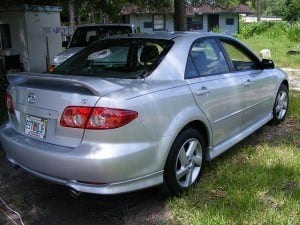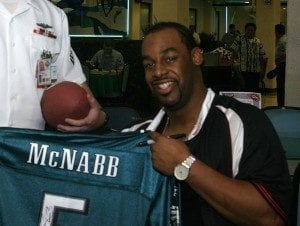
I spent one long year at college in San Diego without a car, relying solely on public transit to get to work, go out with friends, and basically do anything off-campus. But a trip that takes 15 minutes driving can sometimes take more than an hour using the San Diego public transit system. Eventually, I realized that with the life I was trying to build, a car would be necessary. Thankfully, one was available and I was able to (with my parents’ help) buy it.
The 1996 Chrysler Sebring convertible and I got along splendidly. We took the freeways of San Diego by storm. Until one fatal day, when Simone let me down. She broke down on the side of the freeway.
Luckily, my boyfriend and his dad (who originally owned the car before I bought it) were able to fix the problem fairly easily and get my car running. And thank goodness they knew what they were doing, because I would have shelled out hundreds of dollars to a mechanic for the same service.
At some point, I lamented my hopelessness with doing car repairs myself. My boyfriend’s father said, “Can you open a beer?” “Yes,” I replied. “Can you open a bottle of wine?” “Sure…” “Then you can work on a car.”
Okay, the actions might be that simple, I thought. But the knowledge is more important, and I don’t have that.
I was wrong. There are so many resources to help you figure out your car. While there are some issues that only a trained mechanic with specialized tools can fix, there are many repairs that you can DIY for a small fraction of the cost. You’ll need some basic tools, like a screwdriver set, an adjustable wrench, and pliers. If you’re lucky, someone might have the tools you need and be willing to let you borrow them when needed.
Don’t pay loads of money for these simple repairs. Educate yourself on simple car repairs, and save hundreds of dollars.
Replace your battery. First, test if your battery is dead for good, or if it just needs a jump start. Many auto places will loan you a multimeter to check this. If it turns out your battery needs to be replaced, you should first take the old one out. Take it to the shop where you’re buying a new battery, and they’ll dispose of the old one for you. Using your manual and/or the handy dandy internet, you should be able to find a step-by-step guide to replacing the battery in your car. Unless your battery is in a weird spot, this should only take about 10 minutes.
Change the oil. Oil changes are a quick and easy repair that also only take 10 to 20 minutes. It’s important, though, to make sure that there’s a place to dispose of your old oil. You’ll have to drain the oil, replace the filter, and add new oil. Once again, you should be able to find a guide tailored to your car online.
Replace the brake pads. If your brakes squeal whenever you apply them, you might need to replace the pads. But if you hear a different noise, like a grinding sound, it could be the rotor – at which point you might need to take it to a mechanic. If the problem is the pads, you can save about $250 by replacing them yourself.
Check and replace the belts. The belts were actually the problem in my car. I didn’t even know what a belt did until it broke. A cracked or worn belt needs to be replaced as soon as you notice it. If it breaks while you’re driving, you too might end up on the side of the freeway as the sun sets. The problem, however could also be a loose belt, in which case you simply tighten it.
I cannot emphasize this enough – Google is your best friend. Literally, type in the year, make and model, followed by the how-to you’re looking for. “1996 Chrysler Sebring brake pad replacement.” Boom. 4 videos and 5 step-by-step how-to guides.
With these tips, you can save hundreds of dollars on your car replacements, and use that money for important things like tuition…or concert tickets, it’s up to you.















